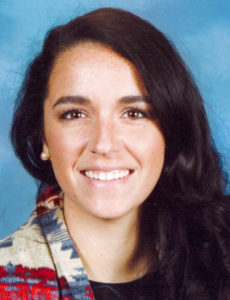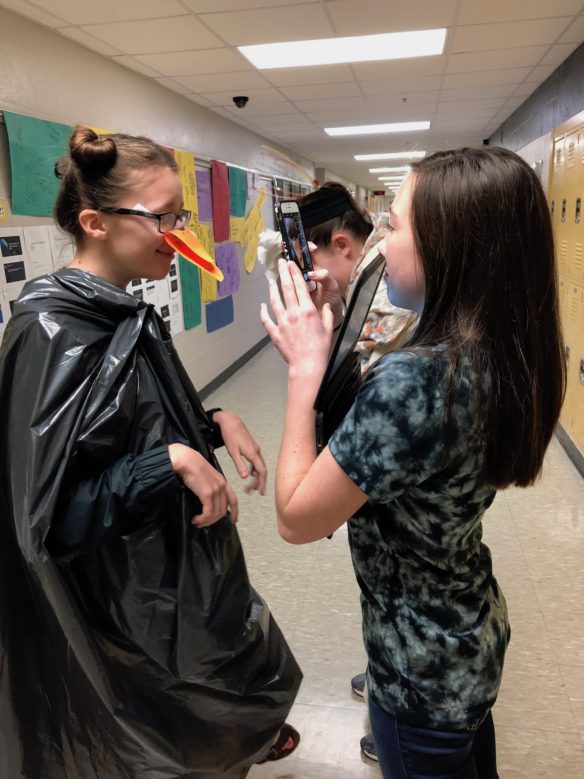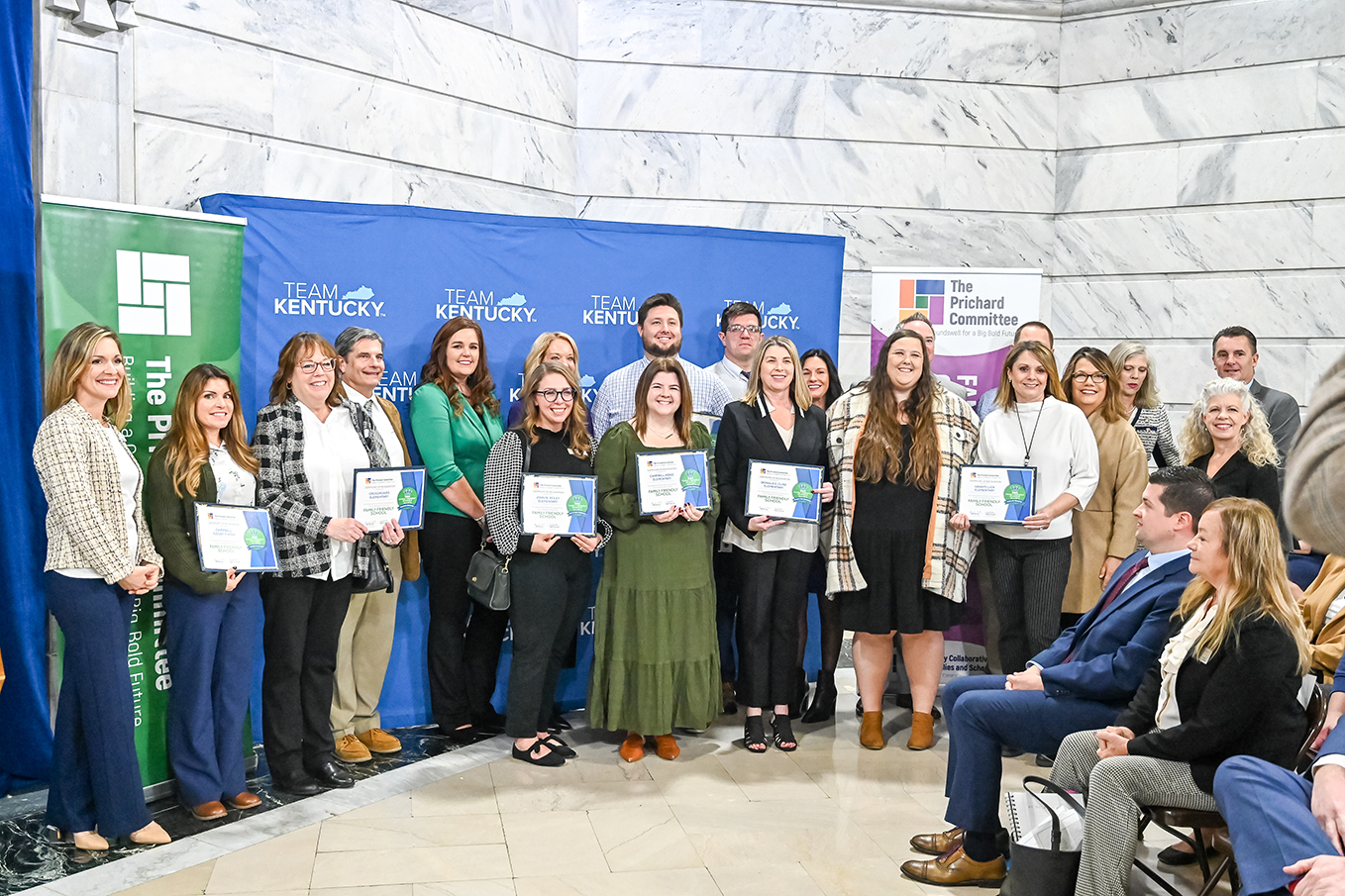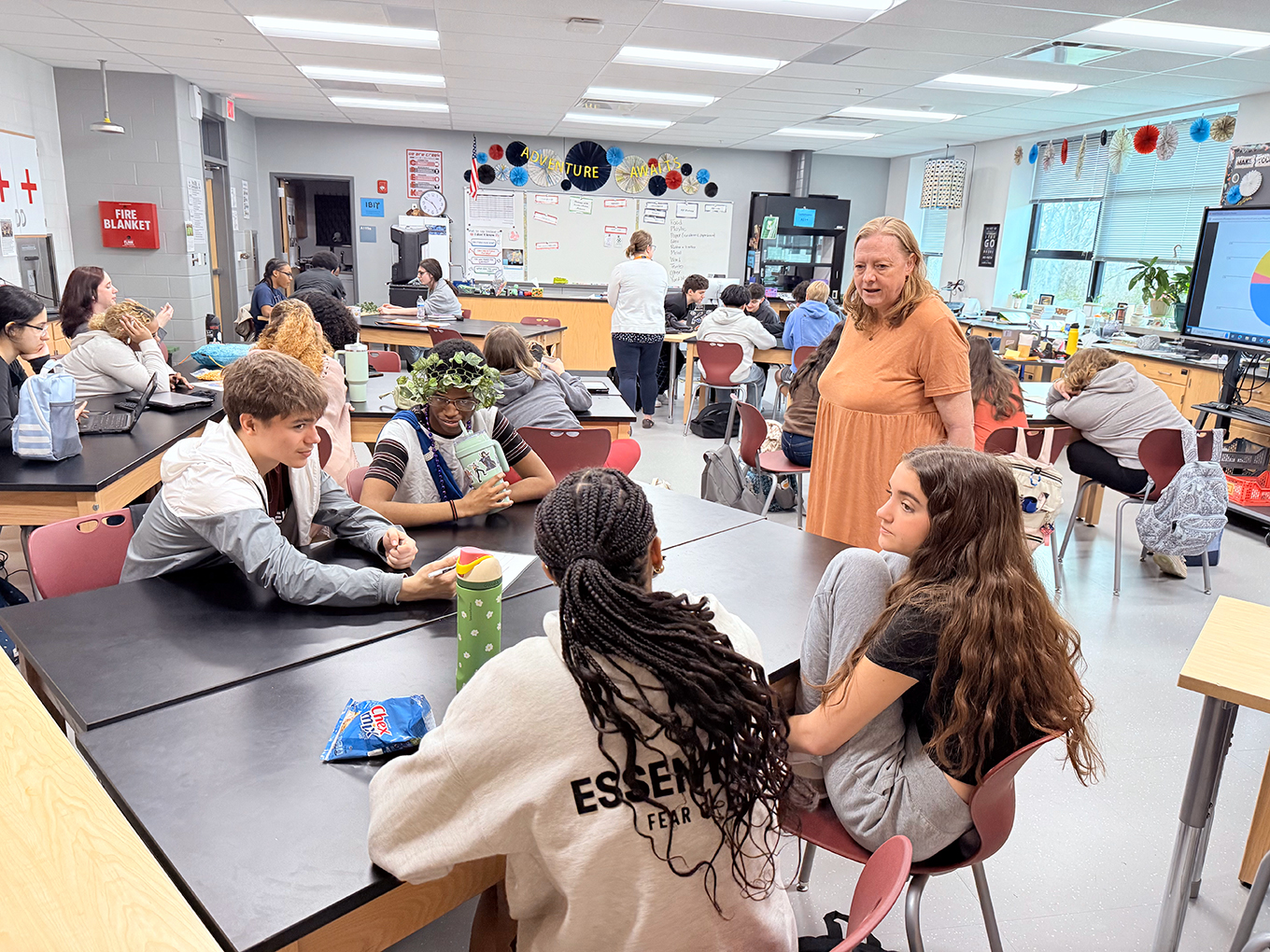
Kate Fryar
Earlier this year, a student in one of my 9th-grade English classes was passing back graded work. Halfway through the stack, she flipped her ponytail, held a paper up to my face and asked, “WHO IS THIS?” in a voice louder than I would have liked her to use.
I tried to discreetly point across the room to a quiet boy in the corner, but it was too late – he had heard and seen our interaction. I was horrified. It was January. We had been in school for four months and there were only 24 people in the class.
I felt like I had failed them.
I had become so consumed with their individual growth and success that I had lost sight of what I believe to be the real purpose of education, best summarized by author David Foster Wallace, which is to teach students to connect with one another and to overcome their “natural default setting of being uniquely, completely, imperially alone, day in and day out.”
There were two other problems. First, my high-achieving students were so singularly focused on grades and being seen as smart that they struggled to collaborate without competing. Second, my reluctant readers were so afraid of being wrong that when asked a question, they froze, waiting until an impatient classmate or an exasperated teacher gave them the right answer. Both of these problems kept my students isolated from one another – alone – day in and day out.
I resolved to help my students expand their lonely universes. I wanted them to work with each other to enhance their learning. I wanted them to be able to manage, discuss and problem-solve with one another and feel proud of their collective work. I wanted them to know each other.
I asked them to complete one of the most collaborative storytelling endeavors I could think of: I asked them to create a pilot episode for a new television show, concept to post-production. How hard could that be? They all watch Netflix all the time anyway, right?
Before they started generating ideas for TV shows, I wanted my students to take inventory of their own work and leadership styles. As much as they may protest, few teenagers will let the opportunity to talk about themselves pass them by.
One of the exercises that has taught me much about myself, even as an adult, is the True Colors Test, a simplified version of the Myers-Briggs personality test. We spent an entire class period taking the test and diving in to our results. I even took it with them, and students had fun discussing how well their “color” fit them.
They were obsessed. They thought I was doing some sort of magic mind-reading.
It’s more than just a fun exercise; collaboration is often successful because collaborators are aware of the ways their personalities match or clash with others. Many students had never thought about why they found me intimidating (I’m a pensive Green) or why they felt like they wanted to talk constantly (in one class, I had 12 chatty Oranges)!
For each class, I posted a color-coded list of all of our colors and posters of conversation structures that students could reference as they worked together.
After spending time studying the narrative structure of television, I invited my students to ask “What if …?” questions about “Romeo and Juliet” in order to develop a TV show concept. What if Romeo was an assassin sent to kill Juliet? What if Romeo and Juliet were students in our class? What if “Romeo and Juliet” was a mockumentary instead of a play?

A group of Kate Fryar’s 9th-grade students at Boyle County High School work to show understanding of how camera angles communicate meaning by re-telling a classic children’s story in photos. Lindsey Harris, right, takes a close-up photo of Haley Ragan to show the emotion of “The Ugly Duckling.” Fryar found a new way to teach her English students about teamwork and communication by having them write and film a television pilot based on “Romeo and Juliet.”
Submitted photo by Kate Fryar
These questions became the bedrock for our television pilot episodes. Students crafted elevator pitches which they presented to one another, and they decided, as a class, which show to develop.
Each class period began with a whole-class production meeting, led by the student-selected director, in which they set the goals for the day. This didn’t always go smoothly. For the first few meetings, students spent a lot of time proposing alternative ideas for planned sequences.
I watched meeting after meeting devolve into fierce debates over whether the main character should wear her hair in a braid or a ponytail, whether the name of the show should be changed, or once, six entire minutes on whether they should use One Direction or Demi Lovato as music for the credits. It was hard to watch, and at this rate, I wasn’t sure the episodes would ever get made.
It was easy to get frustrated with the perceived lack of progress. There were so many moments when it would have been so much easier for me to just take over the conversation, to make a decision for them.
However, I reminded myself that the end goal was not to create incredible pilot episodes. The goal was for students to get to know each other, to learn to work together and to collaborate.
I learned to treat these as learning experiences and opportunities for reflection. Instead of jumping in immediately, I would pose a question so they could brainstorm ways to improve their collaboration.
There were some questions that I ended up asking more than others, and modeling these questions led to students using the questions themselves. Finding the answers gave my class a common goal. I couldn’t tell them what the end result would be – they needed to decide that for themselves – but I felt comfortable that I had given them the tools to figure it out.
Will any of my students win an Emmy for the pilot episodes they created this year? No. But here’s what they did win: a clear picture of what it means to be a part of a team, a deep understanding of how stories are crafted, an array of questions to ask when they’re feeling stuck and a new perspective on their personalities.
I won, too. I learned that it is vital – sometimes painfully so – that we give students the room to make their own choices and their own mistakes. We, as their teachers, must be the force that pushes all else out of their way and gives them room to grow together. Holding my tongue meant I got a rare glimpse inside my students’ heads. I watched how they interacted, how they problem-solved and how they persevered.
However, it is not as simple as leaving students figure it out on their own. I will ask them to wade, rather than swan dive, into something new and scary. I will first ask them to think about who they are, consider what they can contribute to a team, and show them ways to interact, focus and compromise. I will trust that I have done all those things well, and then I will let go.
Kate Fryar teaches at Boyle County High School and has taught for three years. She has been focusing on student-centered teaching methods through participation in a district-based inquiry-based learning pilot program and Classroom Teachers Enacting Positive Solutions (CTEPS). She earned a bachelor’s in secondary English education from the University of Kentucky and a master’s in education from the University of Kentucky.




Thank you for the very interesting article! I am intrigued by the True Colors assessment, but when I checked out the website I saw a charge of $49.95 per test which greatly exceeds my budget for 100 students. Do you know of a way to have my students complete the assessment for significantly less (or my favorite price – free!). I’m a new teacher, so if there is an “obvious” solution, please don’t assume I would know it.